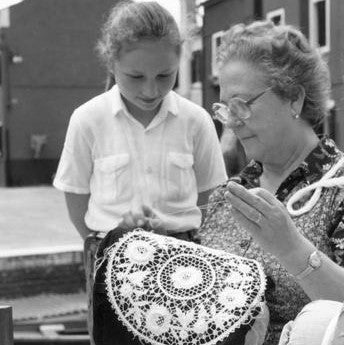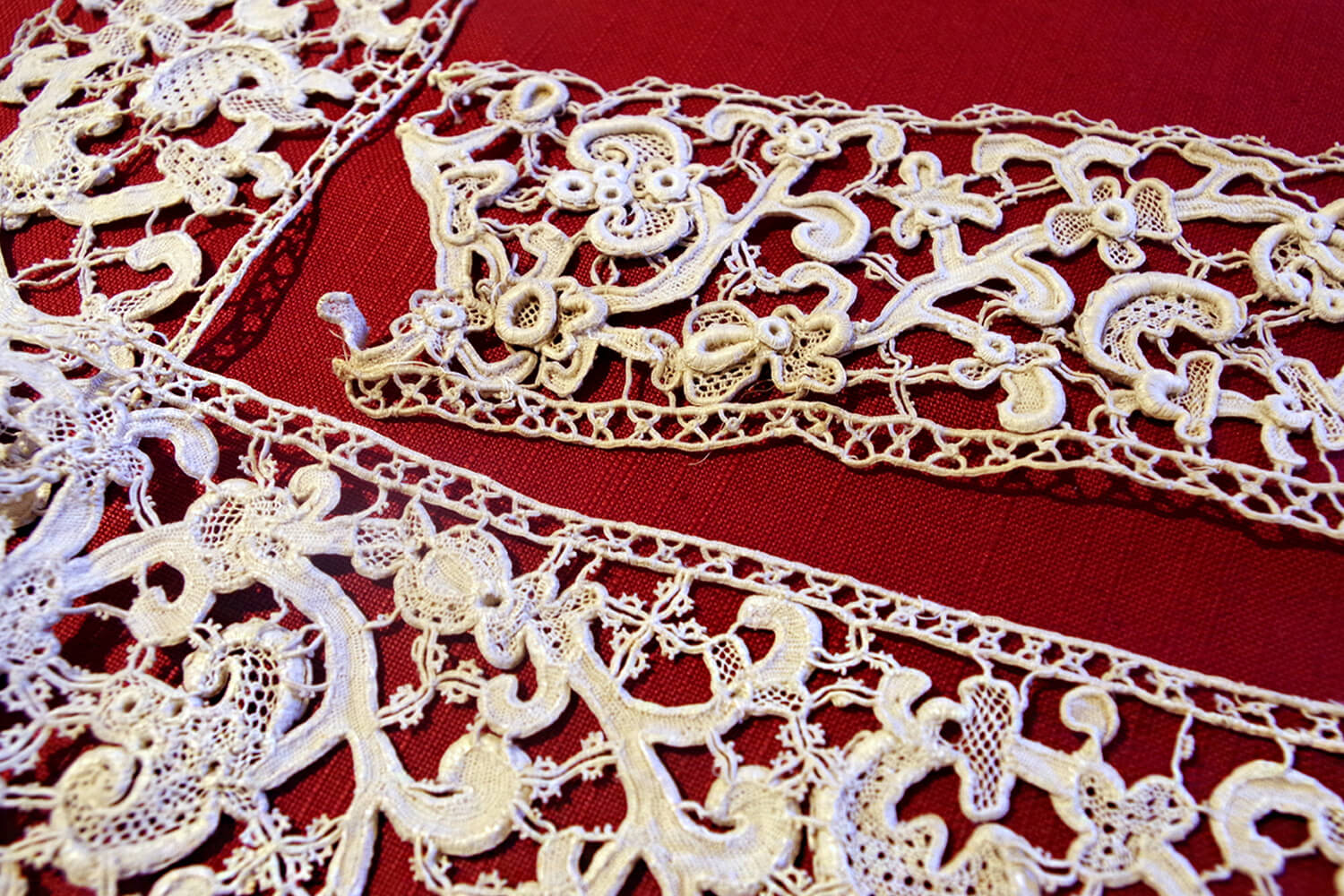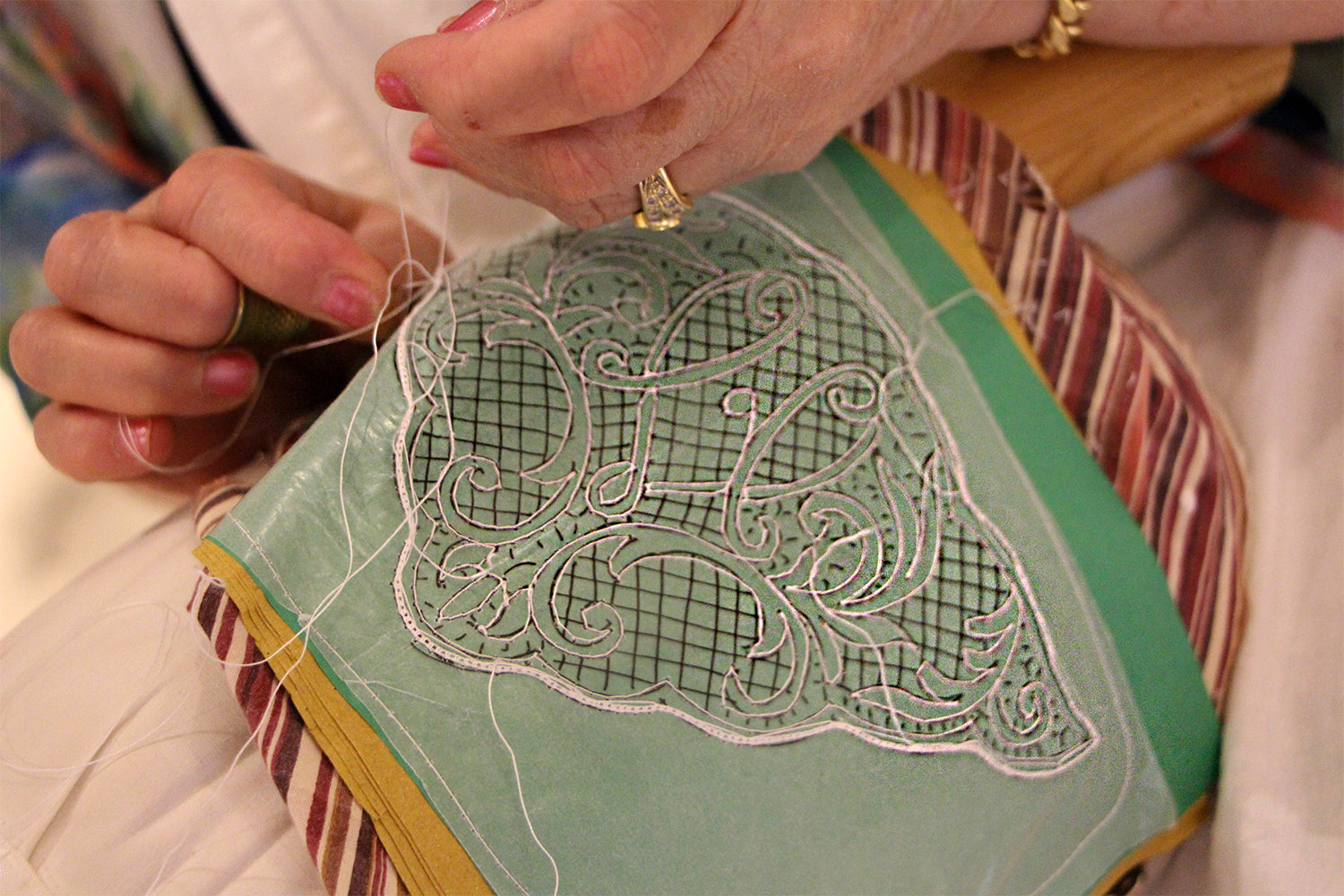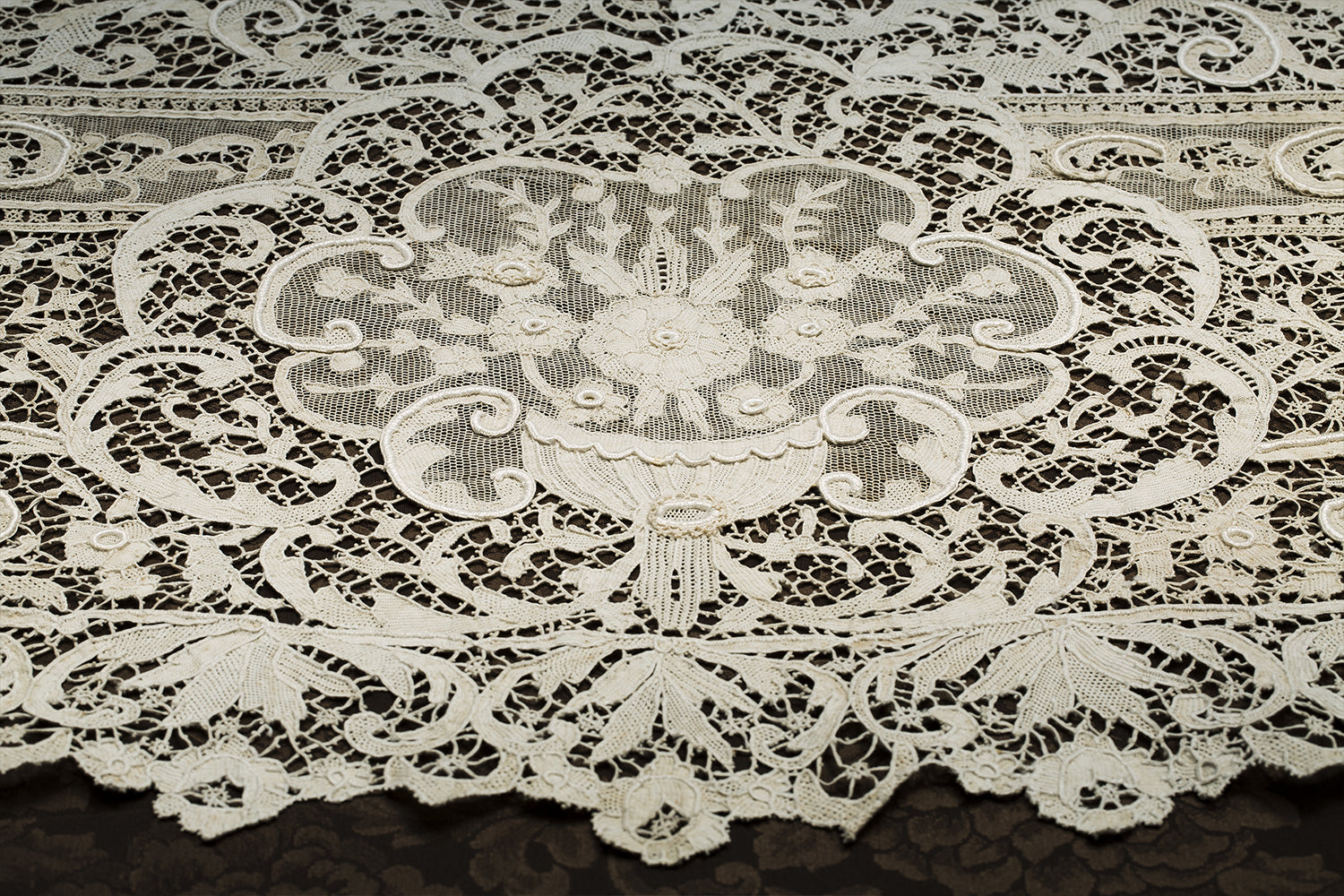HISTORY
The history of Burano Lace
Martina Vidal Venezia has its headquarters in Burano, the island known all over the world for the extraordinary artisanal production of Venetian lace.
Burano lace-making art became popular in the Republic of Venice in the 1500s. The Dogaressa Morosina Morosini played a significant role in boosting interest in the craft. After having been enchanted by the typical Venetian needle lace-making art, she created a workshop toward the end of the XIV century where she employed 130 lacemakers. The lace produced was intended, in part, to complete her personal trousseau, but some pieces were sent as gifts to the prestigious European courts to mark special occasions. Venetian lace was sought-after and requested across Europe. It is reported that for the day of his coronation, Louis XIV, King of France, wore an original lace collar that stood out on his royal mantle. The collar took a team of skilled Buranella lacemakers two years to make.
In the seventeenth century, the era of lace par excellence, during its use for men, women, children and ecclesiastical attire, Venice was specialized in the production of inimitable, elegant needle lace creations, though the bobbin lace technique was still used. The Venetian art of lace grew very popular in France, and thanks to Caterina de Medici and the Minister Colbert, some lacemakers moved from Burano to the royal factories of Remis in France under the direction of sister Maria Colbert, the Minister’s niece, where the so-called “Punto in aria” (typical of Burano lace) was used. In 1665, the “Punto in Aria” became “Point de France” thus starting a strong competition with Burano lace. Despite this, the Point de France was never able to equal the Venetian one.
In 1797, with the fall of the Republic of Venice, lace production also met with an untimely end. From that time forward, it evolved into an exclusively family-run business. The future was not to be easy on Burano. In 1872, Venice experienced a particularly cold winter, which for an economy like Burano’s, based exclusively on fishing, meant tragedy and famine. It was because of Countess Andriana Marcello and government official Paolo Fambri that needle lace art was revived to popularity and began to contribute to easing the economic condition of Burano, thus improving its quality of life.
The memory of the golden age of Burano lace was preserved by an eighty-year old Signora, Vincenza Memo – also known as Cencia Scarpariola, who revealed her secrets to an elementary school teacher, Anna Bellorio d’Este, who taught them to her daughters and other girls.
“Punto in Aria” and “Punto Rosa” made a comeback, a lace school was opened and needle lace became the main economic resource for the Island of Burano. Thanks to Countess Andriana Marcello, many noblewomen of that period – such as the Princess Sassonia Weimar, the Duchess of Hamilton, the Countess Bismark, the Princess Metternich, the Queen of Holland, and Queen Margherita – placed important orders with the school and, by 1875, Buranella lacemakers counted more than one hundred.
Production increased until 1915 and the onset of the First World War. During the Second World War and subsequent years, the school faced alternating periods of ups and downs until 1970, when it was closed indefinitely.
BURANO LACE TODAY
Ladies who are knowledgeable in the art of lace-making are very few and prefer to work from home. At the Martina Vidal Atelier, one can observe how these expert lace workers are still able to create lace using the same techniques as their 17 th -century ancestors.
Lace makes our collection of tablecloths, centrepieces, collars, linen, handkerchiefs, fans and wedding veils unique; products that were once used to embellish the most beautiful mansions of Europe and adorn Ladies and Knights on important occasions.
SHOP BURANO LACE






